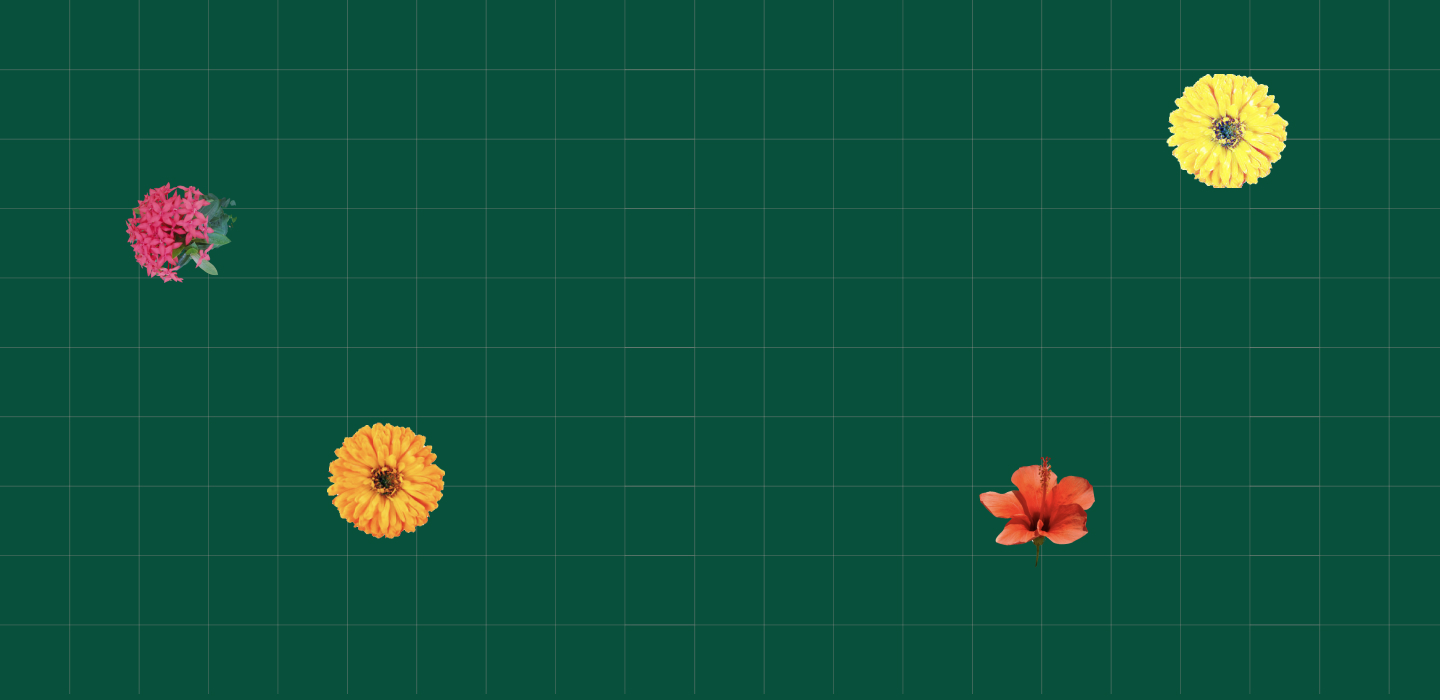🌸 Is it Your First Time Participating in Code-a-Pookkalam? 🌸
If this is your first time participating in Code-a-Pookkalam, welcome! Don't worry if you're new to coding or unsure about how to create your own Pookkalam using code - we're here to help. This guide will walk you through the basics and get you started.
🎨 Use Any Language or Platform
In Code-a-Pookkalam, you are free to use any programming language or platform that you are comfortable with to design your Pookkalam. However, if you are a beginner, we recommend starting with one of these two beginner-friendly options:
1. p5.js (JavaScript)
p5.js is a JavaScript library that makes it easy to create graphics and interactive visuals in your browser. It's an excellent choice for beginners because:
- You can see the output immediately in your browser.
- The syntax is simple and beginner-friendly.
- It's highly versatile and can be used for creative coding.
Why p5.js?
- Beginner-friendly — you can start with no coding experience. 🚀
- You can run your code directly in the browser — no need to install anything! 🌐
- Tons of resources to help you along the way. 📚
Getting Started with p5.js
1. Visit the p5.js Website:
Go to the
p5.js website to get
familiar with what it is and explore its possibilities.
2. Learn with Tutorials:
Head over to the
p5.js tutorials
to start learning the basics, like drawing shapes, adding colors, and
more. 🖍️
3. Write Code in the Online Editor:
You don't need to download any software! You can code directly in the
browser. Just visit the
p5.js online editor
and start coding right away. 💻
Here's a simple example to get you started:
function setup() {
createCanvas(400, 400);
background(255); // Set the background color to white
ellipse(200, 200, 150, 150); // Draw a circle
}2. Python Turtle
What is Python Turtle?
Python Turtle is another beginner-friendly way to create graphics with
code. You can use simple commands to make a virtual "turtle" move
around the screen and draw shapes, making it perfect for designing
pookalam patterns.
Why Python Turtle?
- Very simple to learn — you can start drawing with just a few lines of code. ✨
- It's fun and visual, making it ideal for creative projects like this. 🎨
Getting Started with Python Turtle
Use the Python Turtle Online Editor:
No need to install Python on your computer! Just go to the
Python Turtle online editor
and start coding in your browser. 🌟
Learn the Basics with Tutorials:
If you're new to Python or Turtle, don't worry! Check out the
Python Turtle tutorial
to get started with the basics. 📘
Try This Simple Code:
Here's a small example that draws a circle:
import turtle
pookalam = turtle.Turtle()
pookalam.circle(100) # Draw a circle with a radius of 100 units
turtle.done()3. Joy
Joy is a tiny creative coding library in Python, made by FOSS United India See how to use Joy: https://github.com/fossunited/joy/blob/main/README.md
Other Languages
You are free to use any language that supports graphical output, such
as:
- JavaScript (HTML5 Canvas)
- Java (AWT/Swing)
- C++ (Graphics libraries)
- Processing
- Or any other platform…
Choose Your Platform and Let Your Creativity Flow! 🎨✨
Whichever platform you choose — p5.js or Python Turtle — creating a
virtual pookalam is all about having fun and letting your creativity
flow. Don't worry if you're a beginner; both platforms are designed to
be easy to use, and there are plenty of resources to guide you along
the way.
Good luck, and we can't wait to see your pookalams! 🌸🚀
🔗 Submitting Your Code via GitHub
For this year’s competition, submissions are done by forking the official TinkerHub RIT repository and submitting your code via a pull request. This makes it easier for us to review and showcase all entries!
Step 1: Fork the Official Repository
Go to the official competition repository:
https://github.com/tinkerhub-rit/code-a-pookalam-2024
Click the Fork button at the top right to create your own copy.
Step 2: Add Your Code
In your forked repository, add your code and any images/screenshots of your Pookkalam design. You can do this by uploading files directly on GitHub or by cloning your fork and pushing changes from your computer.
Step 3: Create a Pull Request
Once you’ve added your files, go back to the original repository and click Contribute → Open pull request.
Give your pull request a meaningful title and description. Make sure to include your name and a screenshot of your final output.
Step 4: Wait for Review
The TinkerHub RIT team will review your submission and merge it if everything looks good!
Need help with forking or pull requests?
Check out these guides:
How to fork a repo
About pull requests

